Greenpeace Arctic Protest in Germany
Greenpeace campaigners were on the streets around the world on Saturday October 5th, protesting against the arrest of the Arctic Sunrise crew by the Russian coastguard. For a short summary of the background, see “Greenpeace holds rallies...” on our DW environment page.
I paid a visit to the stand set up in our local shopping centre, Bad Godesberg, to see what was happening. Greenpeace Bonn were working hard to persuade shoppers on a drizzly October morning to sign the online protest against the arrests. It was interesting to see a mix of younger and more experienced campaigners outside the town theatre. There was also quite a wide age range amongst the passers-by who stopped to find out what was happening or even sign the online petition to have the Arctic Sunrise crew freed.
The controversy has certainly brought a lot of attention to the Arctic. I have the feeling there is a growing awareness here of the whole issue surrounding climate change, melting Arctic ice, and the difficulties involved in the economic development of such an ecologically sensitive area. Still, most people do not realise how relevant the “distant” Arctic is to all of us, given the role it plays in influencing climate change as a whole, our weather patterns and, of course, with the huge Greenland ice sheet, global sea levels.
The “big Greenland melt”
- Melting Ice off Greenland.
Just recently I interviewed a scientist who told me he assumed last year’s record melt in Greenland was a one-off thing and not necessarily a result of climate change. Or rather, he said, it was impossible to say until we see whether it actually happens again. Given that the Greenland ice sheet is the biggest ice mass in the northern hemisphere and would also have a huge impact on global sea levels if it melts, it is encouraging to know that a huge effort is going on to find out exactly what is happening.
Ice Blogger’s gallery on climate change in Greenland
Audio feature on climate change in Greenland (Irene Quaile, for DW)
Tim Radford of Climate News Network has just published an article on the subject, with an excellent overview. He quotes scientists from Sheffield, UK, who have come up with a new theory. This is what Tim has to say. I quote at length, as it such a good summary of what has been happening and the possible explanations so far. Thanks Tim Radford and Climate News Network for drawing our attention to the latest research and filling in so much background. Over to you:
“First: the story so far. For a few days in July 2012, almost 97% of the surface of Greenland began suddenly to thaw. This was a melt on an unprecedented scale.
Greenland carries a burden of three million cubic kilometres of ice and even in the summer, most of it stays frozen, partly because of the island’s high latitude and partly because ice reflects sunlight, and tends normally to serve as its own insulator.
The event was so unusual, and so unexpected, and on such a scale that nobody seriously suggested that the dramatic conversion of snow to slush was direct evidence of climate change because of human-induced global warming.
Soot, smoke and heat
At first, climatologists were inclined to see the thaw as a consequence of the record-breaking heat waves and forest fires that afflicted North America last summer: snow could have been darkened by columns of soot and smoke from forest fires, just enough to start absorbing the sunlight, some reasoned.
Then in April a team at the University of Wisconsin-Madison suggested that freak cloud behaviour over Greenland at the time might have caused the melting. Clouds normally block sunlight and keep the terrain below them cool.
But these clouds could have been thin enough to let solar radiation through, but thick enough to trap the consequential infra-red radiation from the ground, and raise the local temperature levels.
Now Edward Hanna and colleagues at Sheffield report in the International Journal of Climatology that they have another explanation. Unusual atmospheric circulation and changes in the jet stream – the same changes that almost washed away summer in England – sent a blister of warm air sweeping over the ice sheet.
Hanna and his team analysed all the weather data collected by the Danish Meteorological Institute and by US researchers, and then employed satellite readings and a computer simulation called SnowModel to reconstruct the strange turn of events. And climate change may after all be a suspect.
High melt years
The Greenland Ice Sheet is a highly sensitive indicator of regional and global change, and, says Prof Hanna, been undergoing rapid warming, and losing ice, for at least the last five years and probably the last 20.
“Our research found that a ‘heat dome’ of warm southerly winds over the ice sheet led to widespread surface melting.” This was not predicted by the climate models used by the Intergovernmental Panel on Climate Change, and perhaps that indicated a deficiency in those models, he suggested.
The event seemed to be linked to changes in a phenomenon known to oceanographers and meteorologists as the summer North Atlantic Oscillation (NAO), another well-observed high pressure system called the Greenland Blocking Index, and the polar jet stream, all of which sent warm southerly winds sweeping over Greenland’s western coast.
“The next five to 10 years will reveal whether or not 2012 was a rare event resulting from natural variability of the NAO or part of an emerging pattern of new extreme high melt years.” It was hard to predict future changes in the Greenland climate in the current state of knowledge, but important to keep on trying.
There is an awful lot of ice on top of Greenland. Once it starts to melt, it is likely to be, say the Sheffield scientists, “dominant contributor to global sea level change over the next 100 to 1,000 years.”
Tim Radford, Climate News Network, 18.6.2013.
The Ice Blogger is heading off for a short break. Back July 8th, with new ice and snow pictures, I hope!
How big is Chinese interest in Greenland?
I have come across an interesting perspective on this on www.chinadialogue.net. “The Chinese scramble into Greenland is overhyped” is the headline of an article by Jonas Parello-Plesner. The author maintains there is little evidence of a Chinese scramble for the Arctic. This would seem to contradict a lot of what I have been hearing and reading, so the title jumped out at me. The article appears on a bilingual English-Chinese site dealing with environment-related issues.
Clearly, Beijing is interested in accessing mineral resources all over the world. As far as the Arctic is concerned, the question, it seems to me, is to what extent that interest is already turning into involvement. The trade agreement with Iceland is one sure sign of interest in the shipping routes through the Arctic, as discussed here on the Ice Blog and in various articles over the past year or so. The new Chinese icebreaker and Chinese voyages through the High North are other indicators of interest turning into activity. When it comes to Greenland, Jonas Parello-Plesner has some interesting points. Let me quote one of them: “Actually, the public face of Chinese involvement, Xiaogang Hu of London Mining, who was spearheading a high profile investment in an iron ore project, left his position in April. Locals explained this as a result of new Greenlandic leader Hammond’s intention to revise the Large Scale Act, which was enacted under the previous government and allows scores of foreign workers on mining projects. Xiaogang was als the link to Chinese investors like Sichuan Xinye Mining Investment or the China Development Bank.”
This is, I believe, an interesting development. “It looks like Chinese investors – and their workers – are waiting and watching, rather than invading,” is the article’s conclusion from this. Remember all the talk of the 2,000 Chinese workers reported to be heading for Greenland? Concern about this was said to be one of the factors that led to the change of government. Understandably, the Greenlanders would like to have the wealth to fund independence from Denmark. But at what cost? The major price could well be environmental destruction. The other question for the island’s leaders is how they can ensure that Greenland actually benefits from mining or drilling activities. The small population would have to work with foreign partners. The new government has introduced royalties to prevent profits disappearing offshore. Parello-Plessner says the challenge for Greenland is not just how to deal with Chinese interest, but “how to transform into a successful resource economy”.
I think he puts the situation in a nutshell: “With its tiny population, there are question marks over the ability of Greenland’s small negotiation teams to secure sufficiently stringent criteria that ensure investments are sustainable and environmentally acceptable. If it is unsuccessful, Greenland might simply become like other resource rich countries before it – it might think it had hit the resource jackpot, only to find out that it was really a curse.”
Meanwhile, Greenland’s ice continues to melt. Let us not forget the reasons for the opening-up of the Arctic. And what consequences human-made climate warming will have for people all over the globe. Here is a link to one interesting recent report on the Greenland melt and implications for sea level rise:
At the big climate change impacts conference I attended in Potsdam recently, the experts stressed the need to adapt to climate change now and not wait for international agreements. Adaptation has become a necessity to avoid or minimize damage from climate-related events. I often wonder whether this could take attention away from the need to mitigate. Wolfgang Lucht from the Potsdam Institute for Climate Impacts thinks it is the other way round. The more we know about the measures needed to deal with likely impacts, the more urgent becomes the need to mitigate climate change by reducing emissions. Our capacity to adapt is not unlimited, says Lucht, who also holds a chair in sustainability science at Berlin’s Humboldt University. “We have evidence that climate change could have played a role in the collapse of complex civilizations. It is not certain, but there are signs that changes in the environment could have had a major impact, for instance through changing the availability of resources a society relied on”.
Can we keep that in mind when it comes to developing the Arctic for more oil, gas and minerals?
Indigenous unite at Arctic meeting
Alta in far northern Norway was the scene of a key meeting of indigenous representatives from all over the world this week. The meeting was hosted by the Sami, the indigenous people of Scandinavia. The representatives signed a document taking UN member countries to task for “perpetuating the historic marginalization and exploitation of their rights and resources, most recently manifested in the illegal takeover of land by governments and multinational corporations in a race to meet the escalating global demand for food, fuel, fiber and mineral wealth”, according to a statement by Tebtebba. (Indigenous Peoples’ International Centre for Policy Research and Education)
This “Alta Declaration” is part of preparations for the World Conference on Indigenous Peoples which will take place in New York in September 2014. The statement calls on UN members to halt development models which are damaging to the livelihoods and health of indigenous peoples and the environment, “from forests and peatlands to rivers and glaciers that are of great global significance in the battle against the catastrophic effects of climate change”.
The chair of the meeting, Victoria Tauli-Corpuz said “I believe strongly that indigenous people are going to be the one who will save Mother Earth from ending in a disastrous situation”. That is an inspiring thought, but it would be quite a tall order and a huge responsibility to impose on the indigenous peoples, given the contributions the rest of us have been making to pollution and climate change. “We are in a very serious crisis – the environment is very much under stress. We have proven that the remaining ecosystems, the remaining lands and territories, the remaining oceans and waters – those that are still able to provide the basic needs of its populations – are found in our territories”, said Tauli-Corpuz, who heads Tebtebba, which is based in the Philippines.
The Arctic gold rush is clearly affecting Arctic indigenous peoples directly. But as the recent Arctic Council meeting showed, the rest of the world is taking a huge interest in claiming any “benefits” human-induced climate change is producing, in the form of easier access to the region and its resources.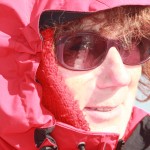
It will also be interesting to observe the positions taken by indigenous peoples in places like Greenland. Wealth from mining or drilling to access resources is a tempting prospect, and could contribute towards increased autonomy. At the same time, there are clearly enormous risks to the environment. Is sustainable development of the “high north” possible at all?
Biodiversity Day: The Arctic
- Svalbard reindeer, Ny Alesund
May 22 is the UN official “International Day for Biological Diversity (IDB)”. Yes, I know, I frequently wonder about the value of these “International Day of…” whatever, but usually come to the conclusion that it’s always good to have reminders or pegs to draw attention to issues that don’t always make the headlines (last time on Migratory Bird day, see Ice Blog post). May 22 was chosen because it was the day, in 1992, when the text of the Convention on Biological Diversity was adopted in Nairobi.
Anyway, at least in our northern hemisphere, May is a good time to talk about biodiversity, as nature bursts into life (or creeps out gently with the temperatures in my part of Europe currently a little on the chilly side) after the winter rest. Like so many things in our world, this is also affected by climate change, with increasing variability in temperature and conditions having an impact on the seasons.
This May also sees the publication of the “Arctic Biodiversity Assessment“. It was released at the meeting of the Arctic Council in Kiruna on May 15th. Let me quote a little from the intro, which sums up why Arctic biodiversity is so special:
“The Arctic holds some of the most extreme habitats on Earth, with species and peoples that have adapted through biological and cultural evolution to its unique conditions. A homeland to some, and a harsh if not hostile environment to others, the Arctic is home to iconic animals such as polar bears Ursus maritimus, narwhals Monodon monoceros, caribou/reindeer Rangifer tarandus, muskoxen Ovibos moschatus, Arctic fox Alopex lagopus, ivory gull Pagophila eburnea and snowy owls Bubo scandiaca, as well as numerous microbes and invertebrates capable of living in extreme cold, and large intact landscapes and seascapes with little or no obvious sign of direct degradation from human activity. In addition to flora and fauna, the Arctic is known for the knowledge and ingenuity of Arctic peoples, who thanks to great adaptability have thrived amid ice, snow and winter darkness… The Arctic is made up of the world’s smallest ocean surrounded by a relatively narrow fringe of island and continental tundra. Extreme seasonality and permafrost, together with an abundance of freshwater habitats ranging from shallow tundra ponds fed by small streams to large deep lakes and rivers, determine the hydrology, biodiversity and general features of the Arctic’s terrestrial ecosystems. Seasonal and permanent sea ice are the defining features of the Arctic’s marine ecosystems.”
Biodiversity loss is happening at a frightening rate all over the globe, and the Arctic is no exception. On the contrary, with the climate there warming so much faster than the global average, Arctic biodiversity is under terrific pressure. As a contribution to halting the loss of biodiversity, the Arctic Council initiated the Arctic Biodiversity Assessment, consulting scientists on what could be done to alleviate pressures on Arctic biodiversity. The report gives an overview of the stress factors putting Arctic biodiversity and suggests possible actions to enhance biodiversity conservation.
The authors stress that there are substantial gaps in our knowledge of Arctic biodiversity. There is a huge need for continuing research.
Climate change is clearly a major problem. Melting ice, melting permafrost, warmer ocean – clearly such changes to some of the defining factors influence living conditions for flora and fauna too. With warming paradoxically making it easier to indulge in activities in the far north which could exacerbate climate change even further, the situation is complex and the time pressure huge.
Reports of this kind are usually very hard to read. I must commend the authors for the online presentation of this one. It’s divided into readable chapters and has some spectacular pictures. Some were taken by Lars Holst Hansen at Zackenberg, Greenland. I met and interviewed Lars at Zackenberg Station in north-eastern Greenland in 2009. The radio feature I made at that time is still very relevant and describes work at the remote research station, which monitors a wide range of environmental parameters, including of course, lots of biodiversity.
LISTEN: Changing Arctic, Changing World: Greenland’s Changing Climate.
I went counting musk oxen with Lars while I was at the station. One of his photos of the “big hairy beasties” is actually being used on a stamp incidentally. Congratulations Lars for the brilliant picture and for this contribution to spreading the word about the need to protect the fragile Arctic environment and its biodiversity.



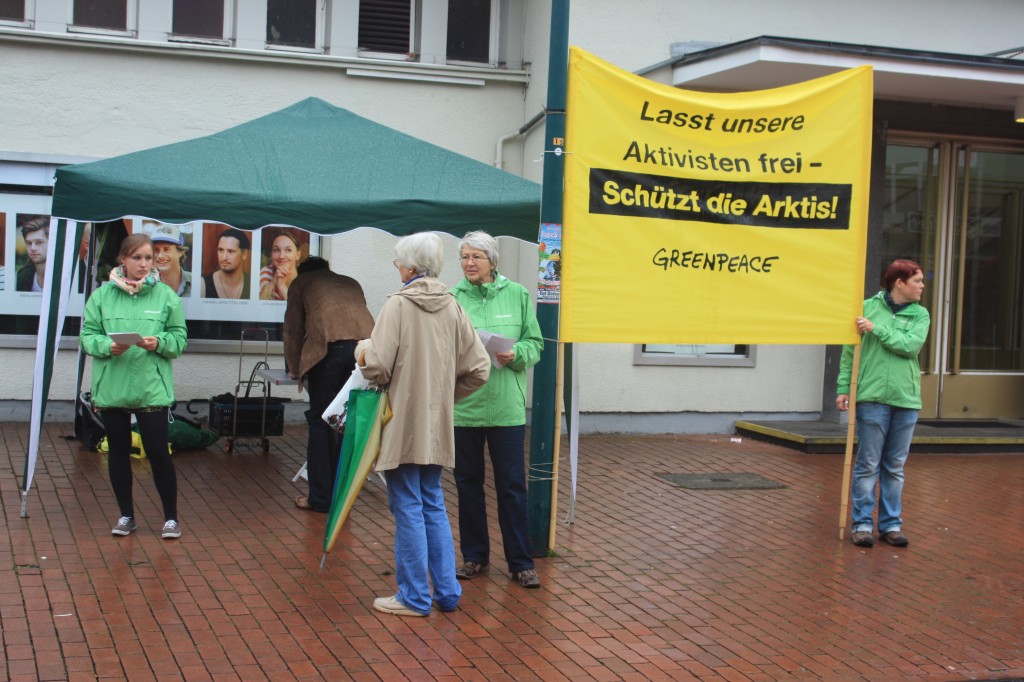




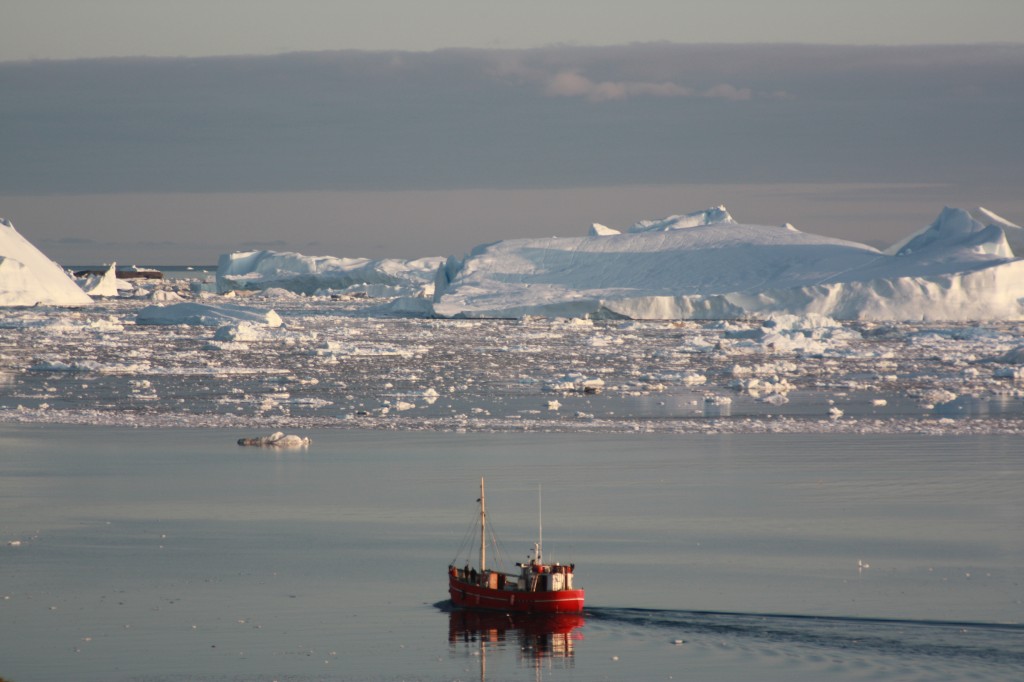

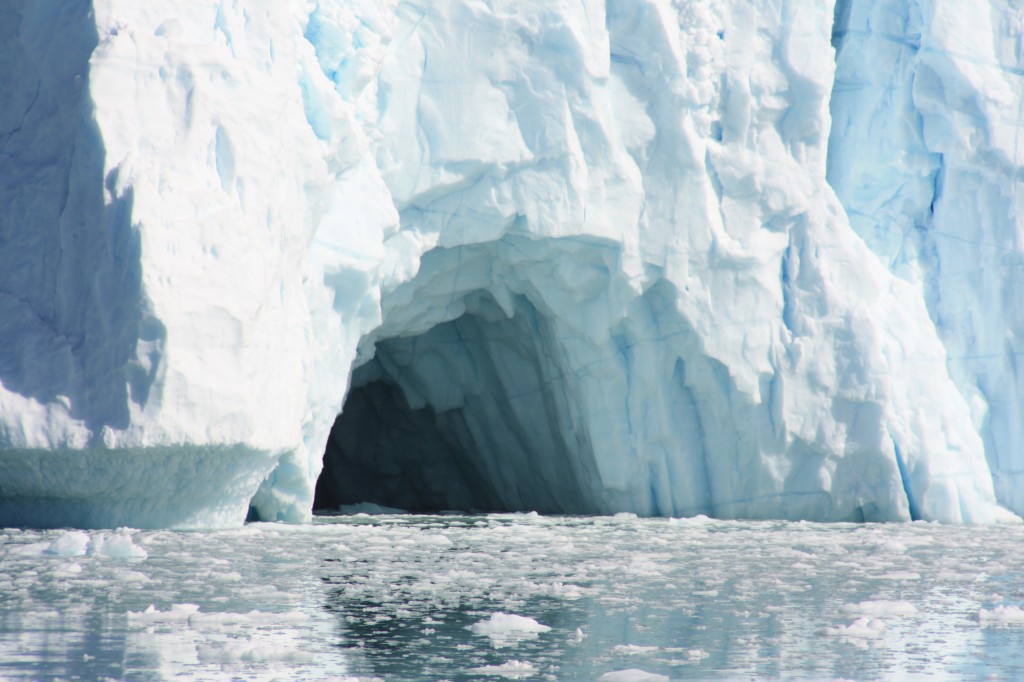
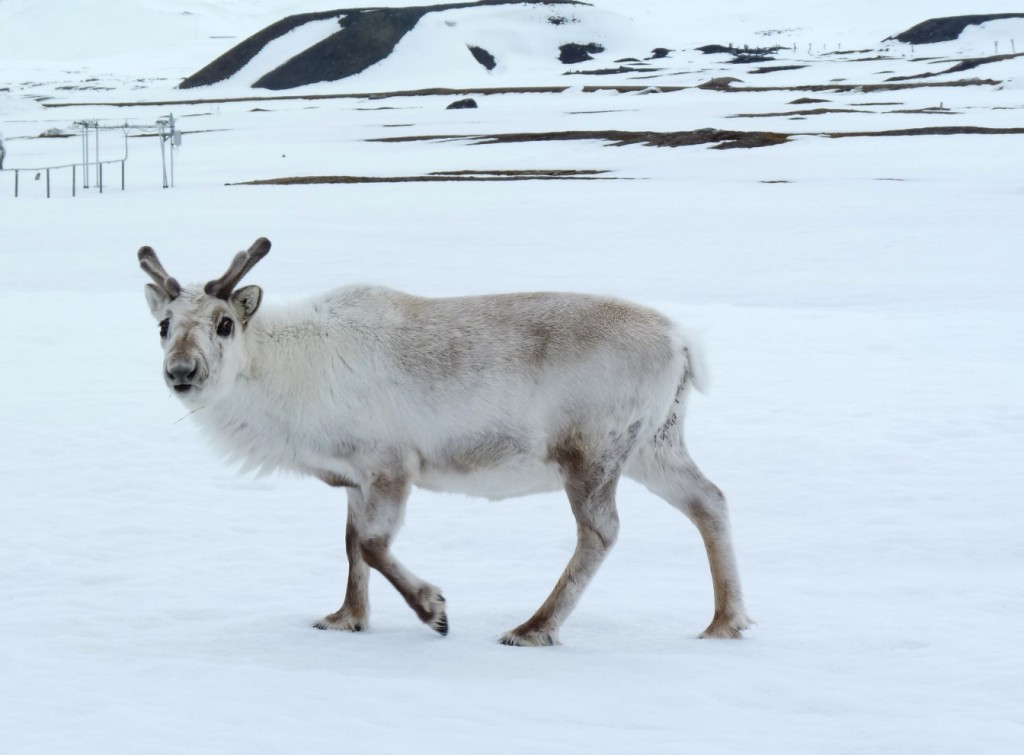
















Feedback